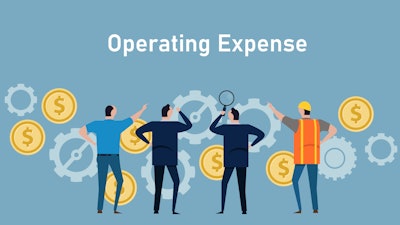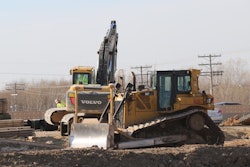
Listening to numerous financial and market news reports every day keeps me up to date on current thinking about the future in terms of the markets. I suspect you do something similar, especially regarding the type of work you do and the type of equipment you use.
In one of the programs that I was listening to recently, someone mentioned how nice it would be to get back to 2019 operating results. Another commentator quickly stated we are never going back to 2019 because too much has changed to allow that to happen. Know what? I believe him.
We are entering a new era, whether we like it or not, and consequently this new era will require changes in how you run and manage your business. Some of the issues you will face include:
- Inflation
- Supply chain issues
- Workforce needs
- Technology
- Interest rates
- Cap X issues: Buy new/buy used/keep and repair/rent
- Maintenance issues: Internal service/external services/service agreements/rent
- Balance sheet management because of the other issues noted above
The bottom line is you will have to deal with all of the items listed and at the same time keep your balance sheet within the covenant metrics spelled out in your loan docs. Easier said than done.
Can you maintain balance in 2022?
The major issue the banks have is the total debt to equity metric, or the EBITDA to total debt service metric. Now would be a suitable time to review your covenant requirements keeping in mind how you expect 2022 to go.
I would like you to lay out your latest four quarterly balance sheets to see how they look, how they are trending and how they compare to the same four quarters in 2019. If you see that your equity position is being squeezed, you will need to take steps to correct this situation to keep yourself in good graces with the bank.
While you have those balance sheets in front of you, start thinking what 2022 will look like considering inflation, higher interest rates, supply chain disruptions and so on. I suggest that most asset line items will increase as a result of price increases and accelerated buying patterns to ensure you have what you need on hand. In addition, the AP and Accrued Expenses will increase, including the accrued interest line item. Cap X will also cost more, thus increasing notes payable.
If you’re not careful, that number in the lower right corner of the balance sheet (Equity Section) as a percentage of total assets decreases unless you’re able to pass these costs on to customers and generate profits that will restore the equity balance to where it needs to be. Make sense?
Don’t sell your business short
There is one more point to consider, and that is: For every dollar of new sales, there is additional capital required. In other words – and this will sound strange – you can sell yourself into bankruptcy. This is caused by the normal sales process where you purchase goods, labor, materials and equipment to do a job and normally have to pay for these costs before you collect for the work being done.
In other words, you have this additional capital need to cover the spread between what you are spending and what you are collecting. Grow too fast without adequate capital and you can run out of money, stop paying and get cut off by vendors and eventually get to the point where the bank will no longer fund the operation.
My point here is inflation will increase your costs and at the same time increase sales based on pricing alone. Inflation will increase your debt levels, as well. These are both issues to get a handle on before they materialize. The way to do that is with a budget that includes balance sheet changes that can be compared to current bank requirements to see if you have a problem.
At the same time, I would expand the work to include cash flow statements. I would run these reports for different levels of inflation and manpower costs so that you are prepared to deal with whatever the economy throws at you.
To make matters worse, the new GAAP lease rules will be adding your lease obligations onto your balance sheet as debt, thus increasing your total debt to equity or debt service to EBITDA.
You need to know where you stand with these issues should the inflation and rate increases appear sooner rather than later. The lease changes are here now. Time to get ahead of the game.



















